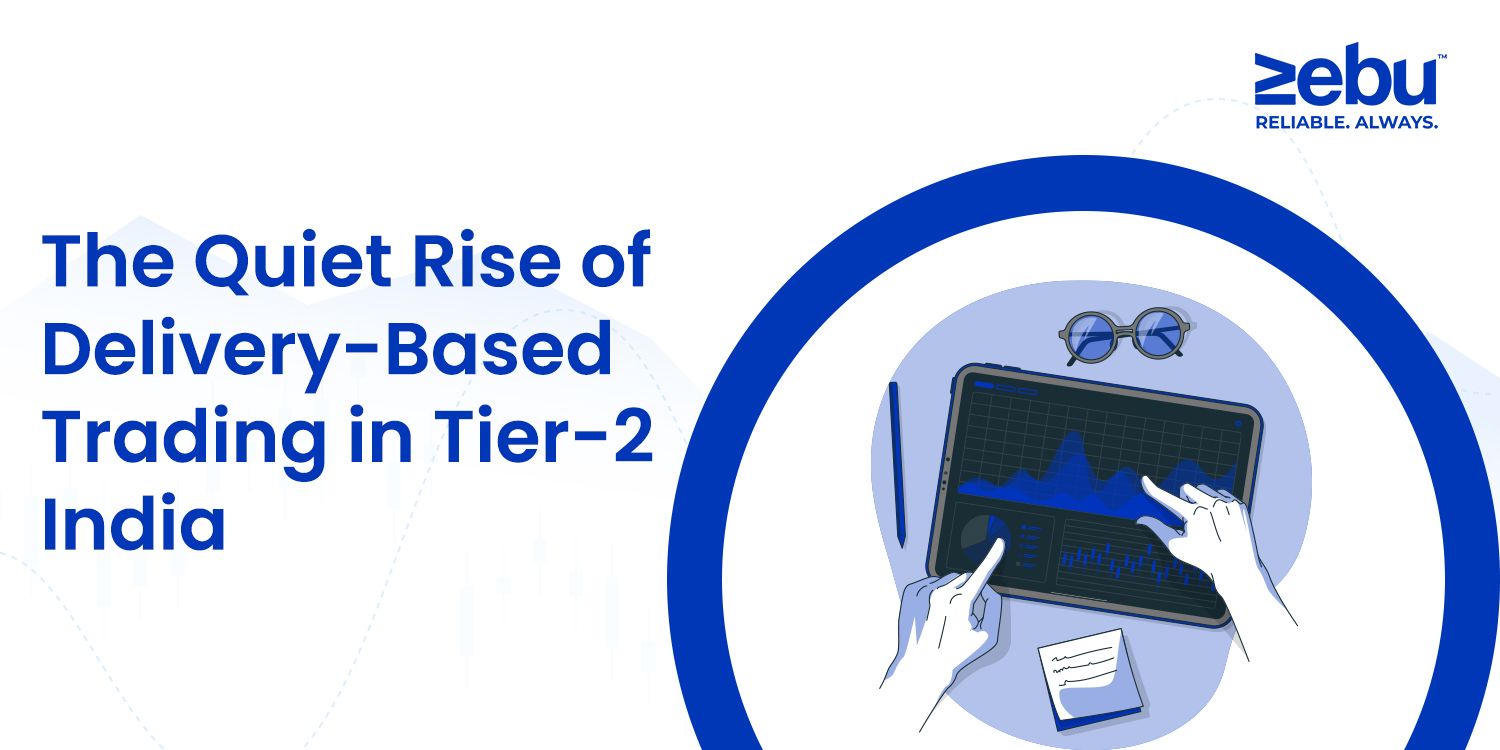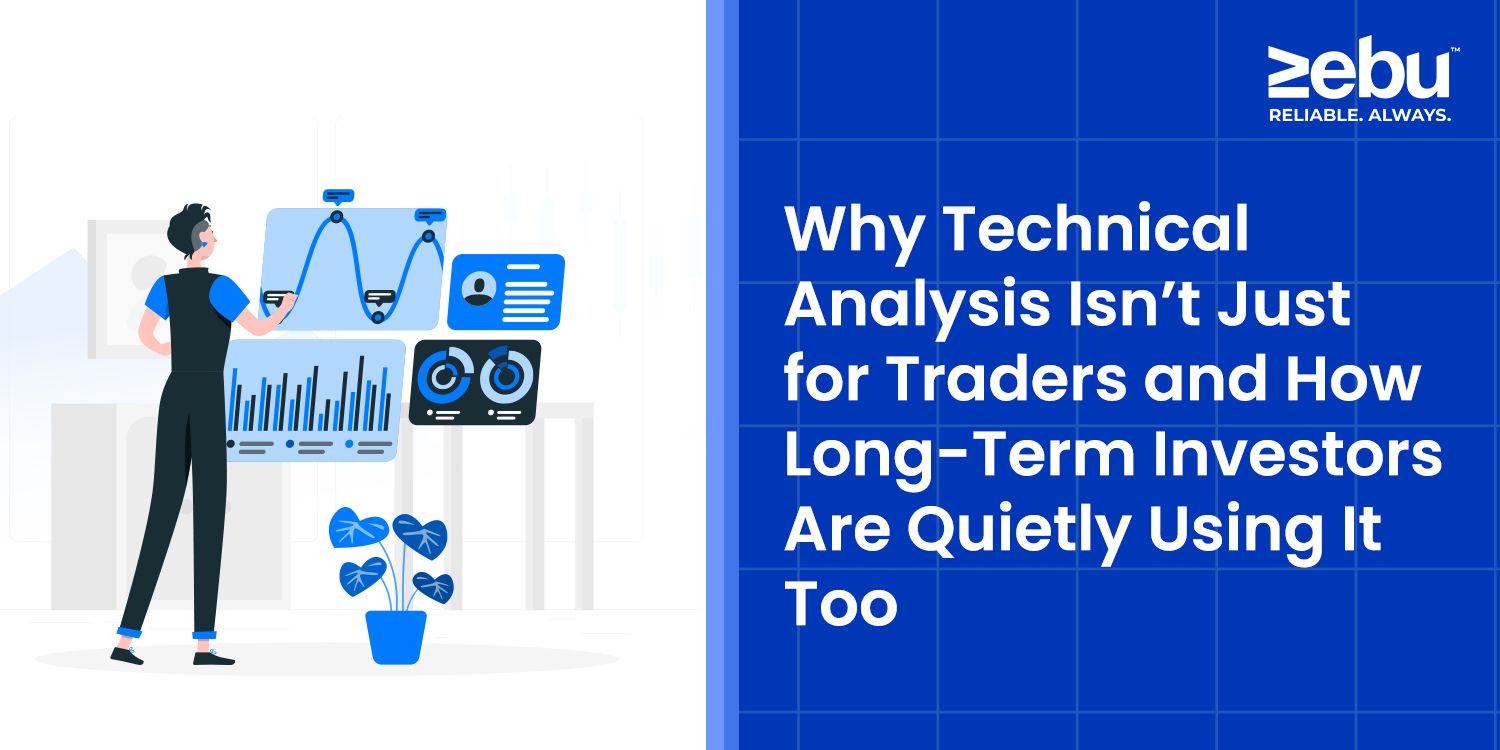
Why Selling Too Soon Might Be More Dangerous Than Holding Too Long
Every investor remembers a trade they regret.
For some, it was a sharp fall they held too long.
For many more, it was a quiet winner… sold just before it started to move.
In trading rooms and group chats, you’ll hear it often:
“I sold it at ₹320. Now it’s at ₹470.”
“I thought 12% was enough.”
“I booked gains to be safe… but now I feel like I exited too early.”
This isn’t rare. In fact, it’s remarkably common.
And in long-term investing—especially in India’s broad equity market—selling too soon often turns out to be more limiting than holding too long.
At Zebu, we’ve seen this pattern unfold not as a tactical mistake, but as a psychological one. It’s not a lack of discipline. It’s discomfort with holding success.
Let’s explore why early exits happen so often, why they might be more costly than we admit, and what quiet awareness might do to help.
The Impulse to Exit Early: Where It Comes From
It’s easy to assume people sell too early because they lack conviction. But the drivers are usually more nuanced.
- Fear of Losing What’s Been Gained
The moment a trade turns green, it brings relief. That relief quickly turns into anxiety. “What if I lose this profit?” That fear often overrides logic.
- Discomfort With Floating Gains
Some investors feel safer when the gain is booked. Until it’s realized, it doesn’t feel real. And if it drops again? The regret feels heavier than the gain.
- Targets That Are Arbitrary
“I wanted 10%. I got 10%. I’m out.”
Often, these targets aren’t linked to valuation or broader trends. They’re numbers pulled from habit or hearsay.
- Social Influence
Seeing others book profits creates pressure. In group forums, the one who exits at 8% feels “wiser” than the one who stayed. Even if the stock goes up 40% later.
None of these reasons are invalid. But over time, if they repeat, they start to form a pattern that caps potential—not out of poor analysis, but because of internal hesitation.
The Hidden Cost of Selling Too Early
While losses feel painful, missed gains carry their own quiet weight—especially when they happen repeatedly.
What makes this more damaging is:
- Winners are hard to find. Not every stock performs. So when one begins to, letting it run is often where the real compounding lies.
- Taxes and transaction costs add up. Frequent exits mean more STCG (short-term capital gains) and brokerage outflow
- Mental residue builds. Investors who sell too early often hesitate to re-enter. The fear of “buying it back higher” creates paralysis.
- It interrupts long-term positioning. SIPs and delivery-based strategies thrive on time. Early exits break the rhythm.
More importantly, selling too early often comes from an emotional trigger, while staying too long can be reviewed with structure—stop-loss, re-evaluation, portfolio context.
That’s why the former is often more dangerous. It feels safer. But it erodes quietly.
A Real-World Pattern From Zebu’s Community
Among Zebu’s delivery-based investors, we’ve seen that those who follow price rather than reason tend to exit positions early.
For example:
- A quality stock moves 18% over three weeks. Many exit at 6–7%, fearing reversal.
- After a solid quarterly result, investors lock gains before earnings momentum is priced in.
- A midcap stock corrects 2% after rising 15%. That small drop triggers panic exits—even when volumes suggest accumulation.
These patterns aren’t rare. And they’re not driven by poor research. They stem from mental noise, not market noise.
But the investors who track their own behavior—as much as they track the stocks—tend to notice this loop sooner. And they begin to build pause into their exits.
The Cultural Layer in Indian Investing
In India, booking profits is often celebrated more than holding conviction. Many investors come from conservative savings backgrounds. For them, a 12% return feels significant, even if the company has room to grow.
There’s also deep familiarity with volatility. The instinct is to “take what you can,” especially if the stock has already moved. It’s understandable. But markets don’t reward speed alone. They reward structure. And sometimes, stillness.
When selling becomes a reflex, it may not be a strategy—it might be self-preservation in disguise.
Reframing the Idea of “Holding Too Long”
Now let’s talk about the other side. Holding too long gets a lot of criticism. But context matters.
If you’re holding a poor performer out of denial, that’s not discipline—it’s avoidance. But if you’re holding a performer and letting it ride—with periodic check-ins and clarity—it’s not a flaw. It’s how portfolios grow. The best performers in most portfolios don’t double in two weeks. They move slowly, pause, consolidate, and then move again.
Exiting at the first sign of gain might prevent drawdowns—but it also limits upside. Especially in compounding themes like infrastructure, banking, or long-cycle reforms.
How Long-Term Investors Can Build More Comfort With Staying In
There’s no formula. But here are some practices that help investors at Zebu find steadiness during uncertainty—not through blind optimism, but by reworking their response to gains:
- Review, Don’t React: When a stock moves quickly, ask why. Is the trigger still valid? Has valuation caught up? If not, hold with intent.
- Scale Out, Not Exit Entirely: Instead of exiting fully at 10%, trim a portion and stay with the rest. It balances reward and participation.
- Use Alerts, Not Emotion: Let platforms like Zebu notify you when a level is crossed—don’t stalk the chart hourly.
- Track Your Exit History: Look back at five of your early exits. Would staying longer (with structure) have worked? This self-audit often creates new awareness.
- Avoid Anchoring to Purchase Price: Instead of fixating on entry levels, think in terms of momentum, narrative, or delivery participation.
These habits don’t remove uncertainty. But they reduce impulsiveness. And over time, they help shift the mindset from reacting to staying present.
What This Looks Like in Practice
Let’s take a simple case.
An investor buys a stock at ₹280. It moves to ₹305 in two weeks. They plan to sell at ₹310. But at ₹305, a new budget announcement favors the sector. Volumes rise. Delivery participation increases.
Selling at ₹310 now becomes mechanical. But holding—with awareness—might allow the investor to ride it to ₹340, maybe more. This isn’t hindsight. It’s presence. Being aware of why the stock is moving, how others are behaving around it, and what your initial reason was for entering it.
Often, that pause is all it takes to avoid the early exit trap.
Final Word
Selling too soon rarely feels like a mistake at the time.
It feels safe. Reasonable. Even disciplined.
But in hindsight, it often reveals something else: an urge to escape uncertainty.
The market doesn’t punish safety. But it does reward patience—with volatility along the way.
At Zebu, we believe exits should be as thoughtful as entries. Not reactive. Not ritualistic. Just clear. Because over time, it’s not the trades you avoided or the losses you absorbed that define your portfolio. It’s the winners you let breathe—long enough to work.
Disclaimer
This article is meant for educational purposes only. It does not constitute investment advice or recommendations. Investing involves risk, and decisions should be made based on personal financial goals, research, and in consultation with a certified advisor. Zebu provides information tools and insights for awareness—not directional guidance.
FAQs
- How long should you hold onto a stock before selling it?
There’s no fixed timeline. Hold until your investment thesis plays out, the company fundamentals weaken, or your target price is reached.
- Is it better to hold stocks for a long time?
Long-term holding can be beneficial if the company is growing steadily, but you should stay alert to market changes and business performance.
- What should I know before selling stocks?
Check the company’s fundamentals, market conditions, and whether your reasons for buying still hold true before selling.
- Why is selling a stock too early risky?
Selling too soon can mean missing out on major gains, especially if the stock still has growth potential.
- How can I decide the right time to sell a stock?
Look at your financial goals, target price, and company performance. A mix of research, strategy, and patience usually works best.








